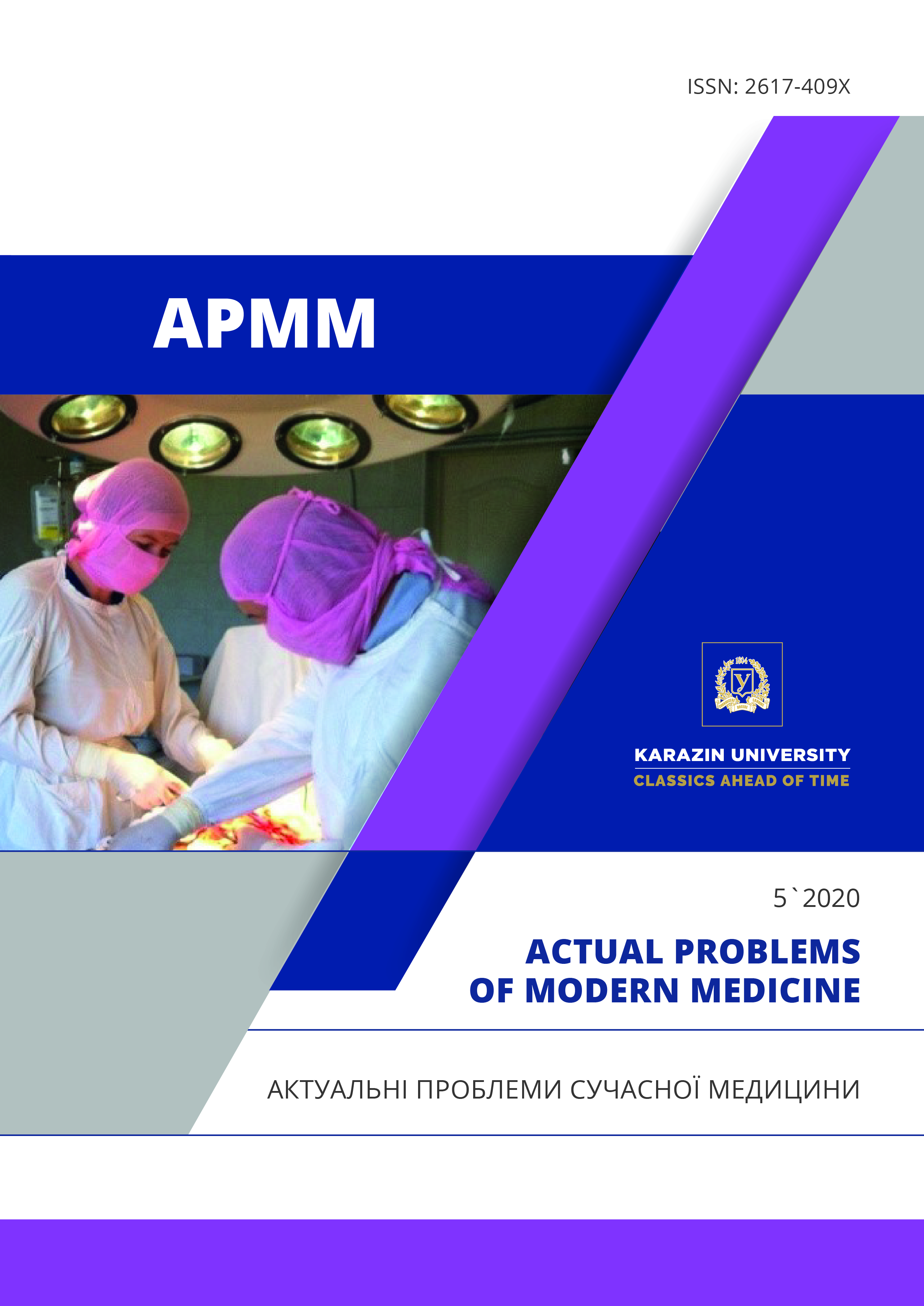Оveruse injuries in musicians. part i: etiopathogenesis, diagnostics
Abstract
Overuse injuries are encountered by 50-85 % of instrumental musicians and manifest themselves in tendovaginitis, bursitis and tunnel syndromes, leading to long-term temporary loss of ability to work (and in severe cases, to permanent disability). For Ukraine, the problem is of particular relevance for several reasons: first, there have been no studies of the professional diseases of musicians in the country in the last decade; second, there are a very large number of music schools in the country, but none of them teaches future musicians how to prevent occupational diseases; thirdly, there are no specialized medical centres for the treatment of professional pathology of musicians. The aim of the research was to analyze the latest achievements in diagnosing, treating and preventing stress injuries in musicians. The analysis was performed by studies published in 2016-2020 in journals indexed in the Scopus, WoS, Medline and PubMed scientific databases. It has been established that the etiopathogenesis of overuse injuries in musicians is associated with a whole complex of primary and secondary factors. The non-physiological performing technique is of greatest importance: the inability to evenly distribute the load on the muscles involved in performing practice, as well as the non-ergonomic posture. Excessive playing duration is no less harmful: more than three hours of continuous practice every day. Serious aggravating factors are: impairment of range of joint movement (hyper- or hypomobility), weak physical strength of the muscles of the shoulder girdle and spine, a small hand with short fingers (for pianists and string players), and low awareness of instrumental musicians (both students and teachers) in the prevention of occupational diseases, due to the imperfection of the music education system.
Downloads
References
Kok, L. M., Groenewegen, K. A., Huisstede, M. A., Nelissen, H. H., Rietveld, B. M. & Haitjema, S. (2018). The high prevalence of playing-related musculoskeletal disorders (PRMDs) and its associated factors in amateur musicians playing in student orchestras: A cross-sectional study. PloS one, 13(2), e0191772. DOI:10.1371/journal.pone.0191772
Maric, D. L. Stojic, M., Maric, D. M.; Susnjevic, S., Radosevic, D. & Knezi1, N. A Painful (2019). Symphony: The Presence of Overuse Syndrome in Professional Classical Musicians. Int. J. Morphol, 37(3), 1118-1122. DOI: 10.4067/s0717-95022019000301118
Porter, M., Wilson, I. M., Doherty, L. & Magee, J. (2018). Extent of Playing-Related Musculoskeletal Problems in the Irish Traditional Music Community. Medical problems of performing artists, 33(1), 47-55. DOI:10.21091/mppa.2018.1008
Rotter, G., Noeres, K., Fernholz, I., Willich, S. N., Schmidt, A. & Berghöfer, A. (2020). Musculoskeletal disorders and complaints in professional musicians: a systematic review of prevalence, risk factors, and clinical treatment effects. International archives of occupational and environmental health, 93(2), 149-187. DOI:10.1007/s00420-019-01467-8
Fernández, P. M., Lantarón, C. E. & Soto, G. M. (2020). Influence of posture in musicians. A literature review. Rehabilitacion, 54(1), 41-50. DOI: 10.1016/j.rh.2019.09.001
Rensing, N., Schemmann, H. & Zalpour, C. (2018). Musculoskeletal demands in violin and viola playing. Med Probl Perform Art, 33(4), 265-274. DOI: 10.21091/mppa.2018.4040
Ozdemir, F., Tutus, N., Akgun, S. O. & Kilcik, M. H. (2019). Evaluation of work-related musculoskeletal disorders and ergonomic risk levels among instrumentalist musicians. Age, 25, 4-17. DOI: 10.5455/annalsmedres.2019.08.454
Lima, C., Roriz, A., Leite, A., Colim, A. & Carneiro, P. (2020). Exposure to Musculoskeletal Risk of Piano Teachers. Occupational and Environmental Safety and Health II. Studies in Systems, Decision and Control, 277, 419-426. DOI:10.1007/978-3-030-41486-3_45
Kok, L. M., Schrijvers, J., Fiocco, M., van Royen, B. & Harlaar, J. (2019). Use of a Shoulder Rest for Playing the Violin Revisited: An Analysis of the Effect of Shoulder Rest Height on Muscle Activity, Violin Fixation Force, and Player Comfort. Medical problems of performing artists, 34(1), 39-46. DOI: 10.21091/mppa.2019.1009
Kaufman-Cohen, Y., Portnoy, S., Sopher, R., Mashiach, L., Halaf, L. B. & Ratzon, N.Z. (2018). The correlation between upper extremity musculoskeletal symptoms and joint kinematics, playing habits and hand span during playing among piano students. PloS one, 13(12), 1-12. DOI: 10.1371/journal.pone.0208788
Calisgan, E., Imik, U., Talu, B., Gogremis, M. (2019). The correlation of muscle strength, flexibility and range of motion with pain in musicians playing string instruments. Medicine, 8(4), 986-93. DOI: 10.5455/medscience.2019.08.9110
Corrêa, L. A., Dos Santos, T., Paranhos, N., Albertini, M., do Carmo Parreira, S. & Nogueira, C. (2018). Prevalence and risk factors for musculoskeletal pain in keyboard musicians: a systematic review. PM&R, 10(9), 942-950. DOI:10.1016/j.pmrj.2018.04.001
Hamedon R. H., Ling C. Y. & Loo F. C. Effective Measures for Minimizing Playing-Related Musculoskeletal Disorders Among Tertiary Education Student Pianist in Malaysia. (2019). Advances in Social and Occupational Ergonomics: Proceedings of the AHFE 2019 International Conference on Social and Occupational Ergonomics. DOI: 10.1007/978-3-030-20145-6_35
Deahl, L., Wristen, B. Adaptive Strategies for Small-Handed Pianists. (2017). Oxford: Oxford University Press. DOI:10.1093/oso/9780190616847.001.0001
Rosety-Rodriguez, M., Ordóñez, F.J., Farias, J., Rosety, M., Carrasco, C., Ribelles, A., Rosety, J.M. & Gómez del Valle, M. (2020). The influence of the active range of movement of pianists' wrists on repetitive strain injury. European Journal of Anatomy, 7(2), 75-77.
Gorniak, S. L., Collins, E. D., Staines, K. G., Brooks, F. A. & Young, R. V. (2019). The impact of musical training on hand biomechanics in string musicians. HAND, 14(6), 823-829. DOI:10.1177/1558944718772388
Araújo, L. S., Wasley, D., Redding, E., Atkins, L., Perkins, R., Ginsborg, J. & Williamon, A. (2020). Fit to Perform: A Profile of Higher Education Music Students’ Physical Fitness. Front. Psychol, 11, 1-18. DOI: 10.3389/fpsyg.2020.00298
Wijsman S., Ackermann B. J. Educating Australian musicians: are we playing it safe? (2019). Health Promotion International, 34(4), 869-876. DOI:10.1093/heapro/day030
Stanhope, J., Tooher, R., Pisaniello, D. & Weinstein, P. (2019). Have musicians'musculoskeletal symptoms been thoroughly addressed? A systematic mapping review. International journal of occupational medicine and environmental health, 32(3), 291-331. DOI: 10.13075/ijomeh.1896.01340
Narducci, D. M. (2020). Musculoskeletal and Associated Conditions in the Instrumental Musician. Perspectives in Performing Arts Medicine Practice / editor Nicosia S. Springer: Cham, Р. 197-239. DOI: 10.1007/978-3-030-37480-8_13
Adam, G., Wang, K., Demaree, C. J., Jiang, J. S., Cheung, M. (2018). A prospective evaluation of duplex ultrasound for thoracic outlet syndrome in high-performance musicians playing bowed string instruments. Diagnostics, 8(1), 1-9. DOI: 10.3390/diagnostics8010011




